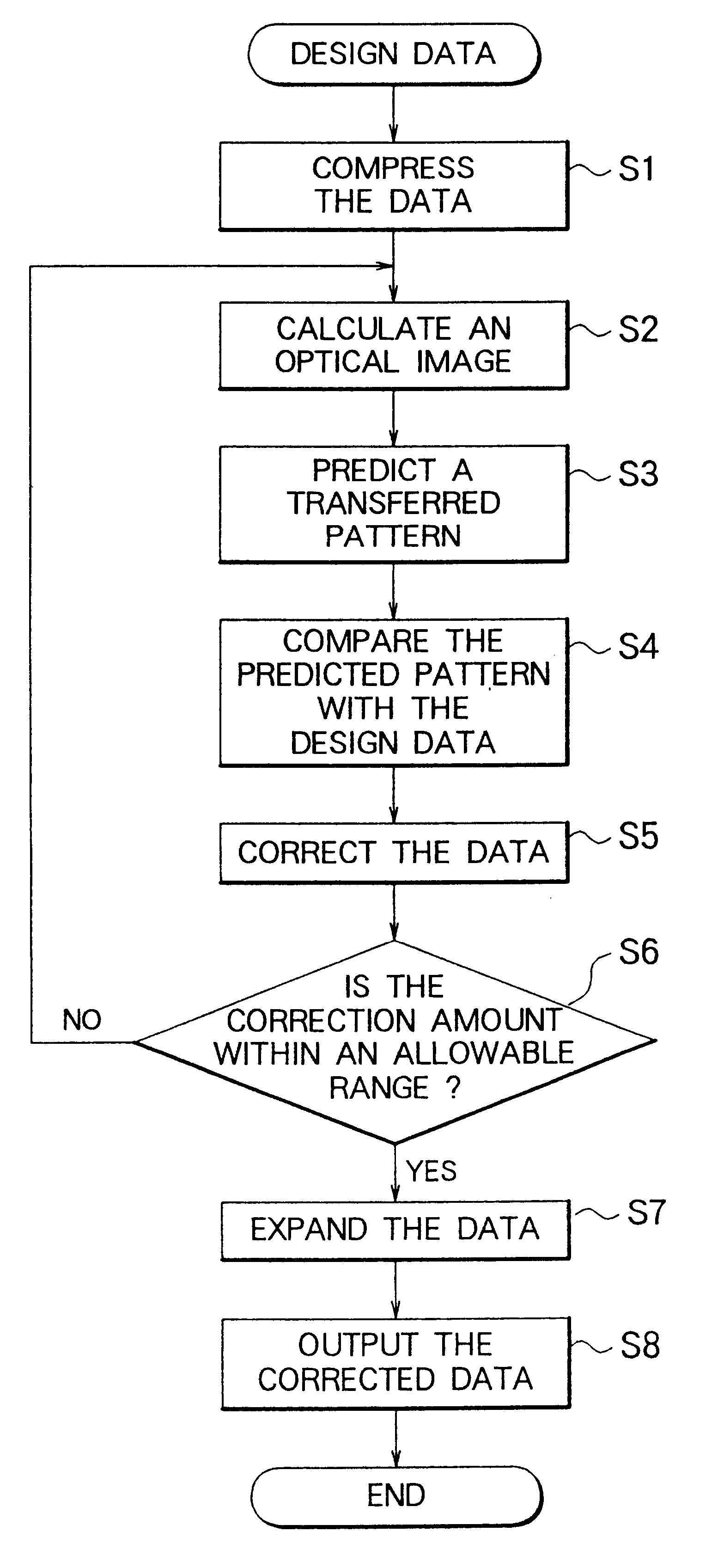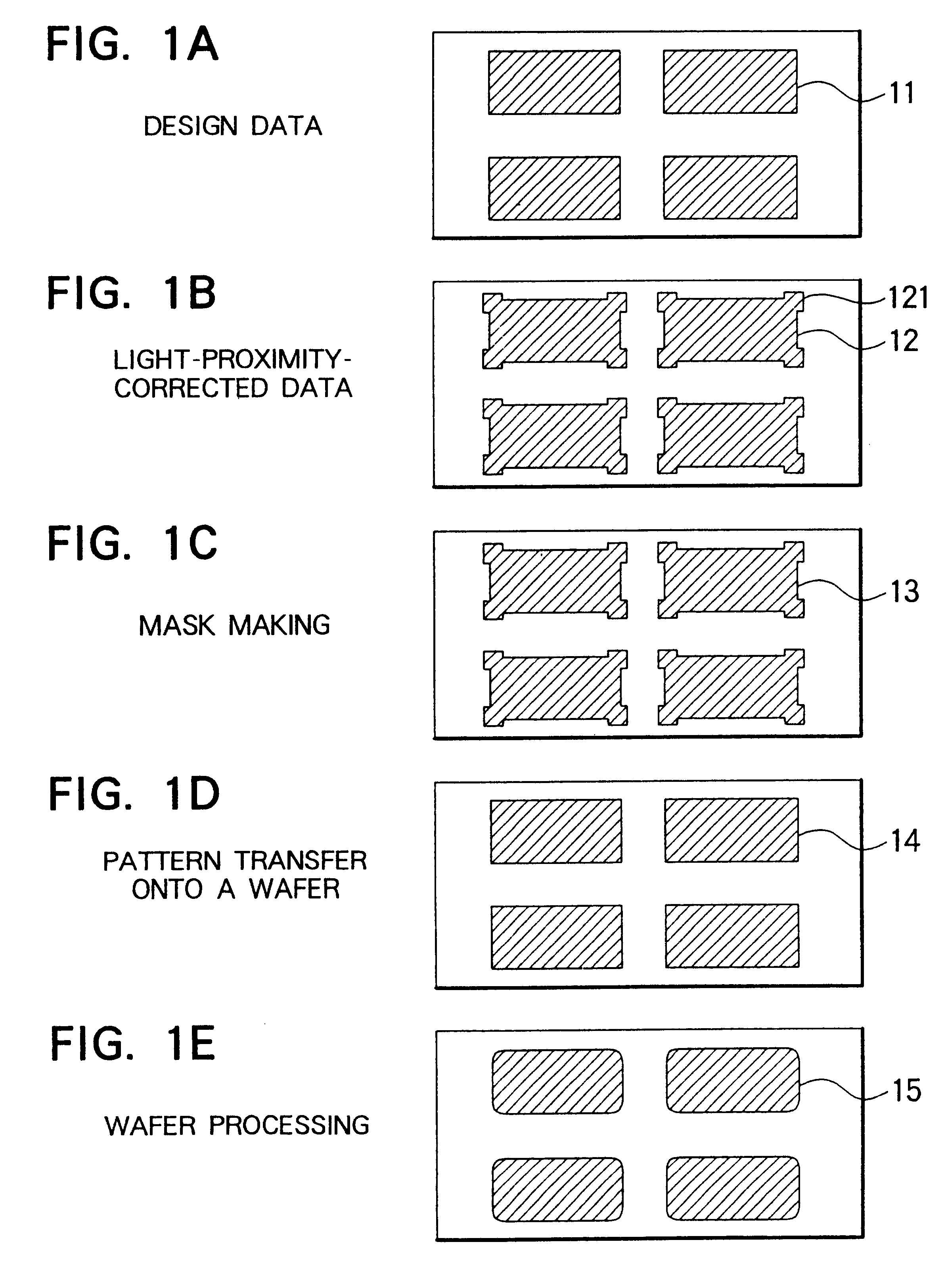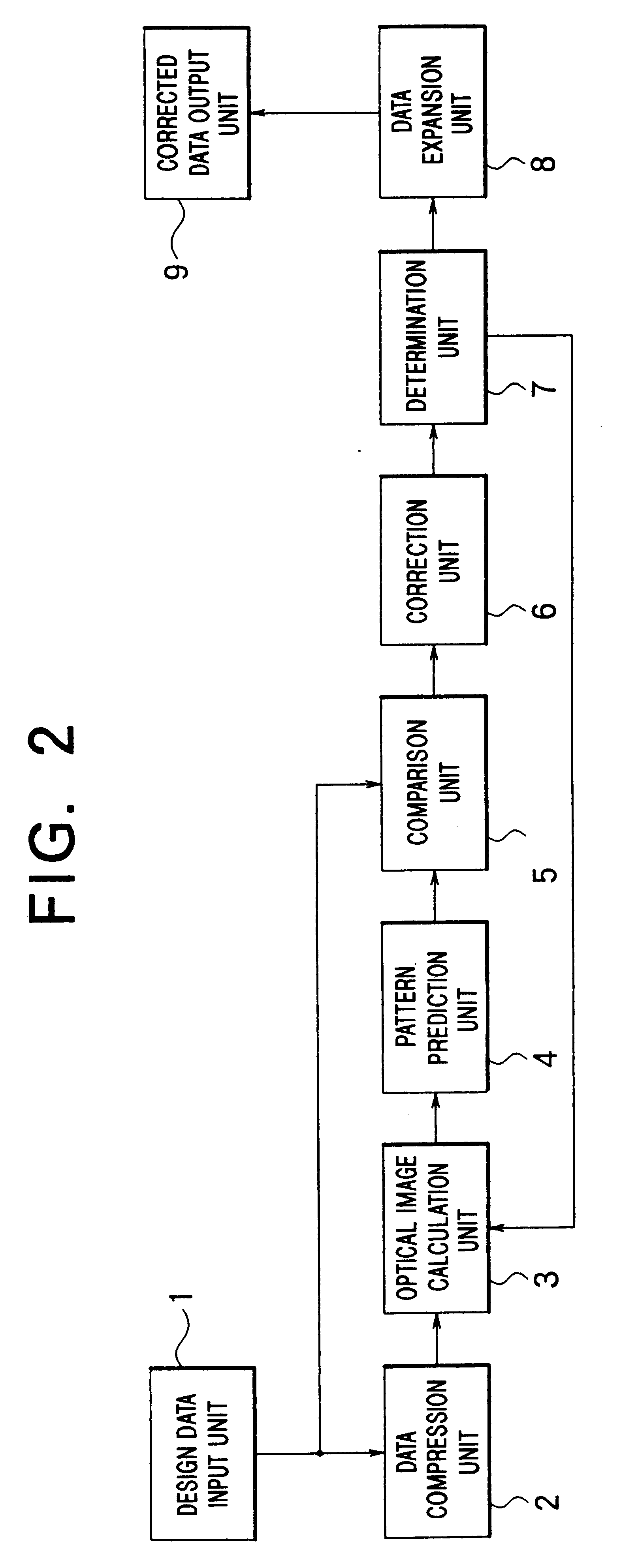Method of forming a pattern using proximity-effect-correction
a technology of proximity and pattern, applied in the field of pattern formation method using proximity effect correction, can solve problems such as pattern deformation
- Summary
- Abstract
- Description
- Claims
- Application Information
AI Technical Summary
Problems solved by technology
Method used
Image
Examples
first embodiment
FIGS. 1A-1E are schematic diagrams illustrating a series of processing steps for forming a pattern according to the present invention. First, an LSI pattern such as that shown in FIG. 1A is designed using a CAD system or a similar tool so as to produce corresponding LSI pattern data consisting of a plurality of rectangular patterns 11. The designed data is then corrected according to the light proximity correction method which will be described in detail later so as to obtain light-proximity-corrected data as shown in FIG. 1B. The light-proximity-corrected data consists of a plurality of patterns 12 corresponding to the plurality of rectangular patterns 11 in the design data wherein each pattern 12 has auxiliary patterns 121 added at each corner so as to correct for pattern deformation due to diffraction of light which occurs during a process for transferring the pattern onto a wafer.
Electron beam exposure is then performed using the light-proximity-corrected data so that a mask inc...
embodiment 2
FIG. 2 is a block diagram illustrating a light proximity correction system used to accomplish the light proximity correction in the pattern formation process described in the first embodiment. Design data of an integrated circuit pattern produced with a CAD system is input to the system via a design data input unit 1. The design data input unit 1 is connected to a data compression unit 2 which performs data compression, in an pre-processing step, on the input data. The output of the data compression unit 2 is connected to an optical image calculation unit 3 for calculating an image which will be projected onto a wafer in a pattern transfer process. The output of the optical image calculation unit 3 is connected to a pattern prediction unit 4 for predicting the pattern which will be formed in-a resist as a result of the pattern transfer process. The pattern prediction unit 4 and the design data input unit 1 are connected to a comparison unit 5 for comparing the predicted pattern with...
embodiment 3
FIG. 4 is a block diagram of a light proximity correction system according to a third embodiment of the present invention. This system according to the third embodiment is the same as that according to the first embodiment shown in FIG. 2 except that the optical image calculation unit 3 is replaced by an optical image measurement unit 10 serving as the optical image formation unit defined in the first aspect of the invention. The optical image measurement unit 10 includes an optical system for measuring the image projected onto a wafer via a mask produced according to the design data. In the case of the second embodiment described above, the pattern image which will be projected onto a wafer is calculated in step S2 by means of software with the optical image calculation unit 3 from the compressed data. In the third embodiment, however, the projected image is measured by means of hardware with the optical image measurement unit 10 in step S9 after the data compression in step S1, as...
PUM
 Login to View More
Login to View More Abstract
Description
Claims
Application Information
 Login to View More
Login to View More - R&D
- Intellectual Property
- Life Sciences
- Materials
- Tech Scout
- Unparalleled Data Quality
- Higher Quality Content
- 60% Fewer Hallucinations
Browse by: Latest US Patents, China's latest patents, Technical Efficacy Thesaurus, Application Domain, Technology Topic, Popular Technical Reports.
© 2025 PatSnap. All rights reserved.Legal|Privacy policy|Modern Slavery Act Transparency Statement|Sitemap|About US| Contact US: help@patsnap.com



